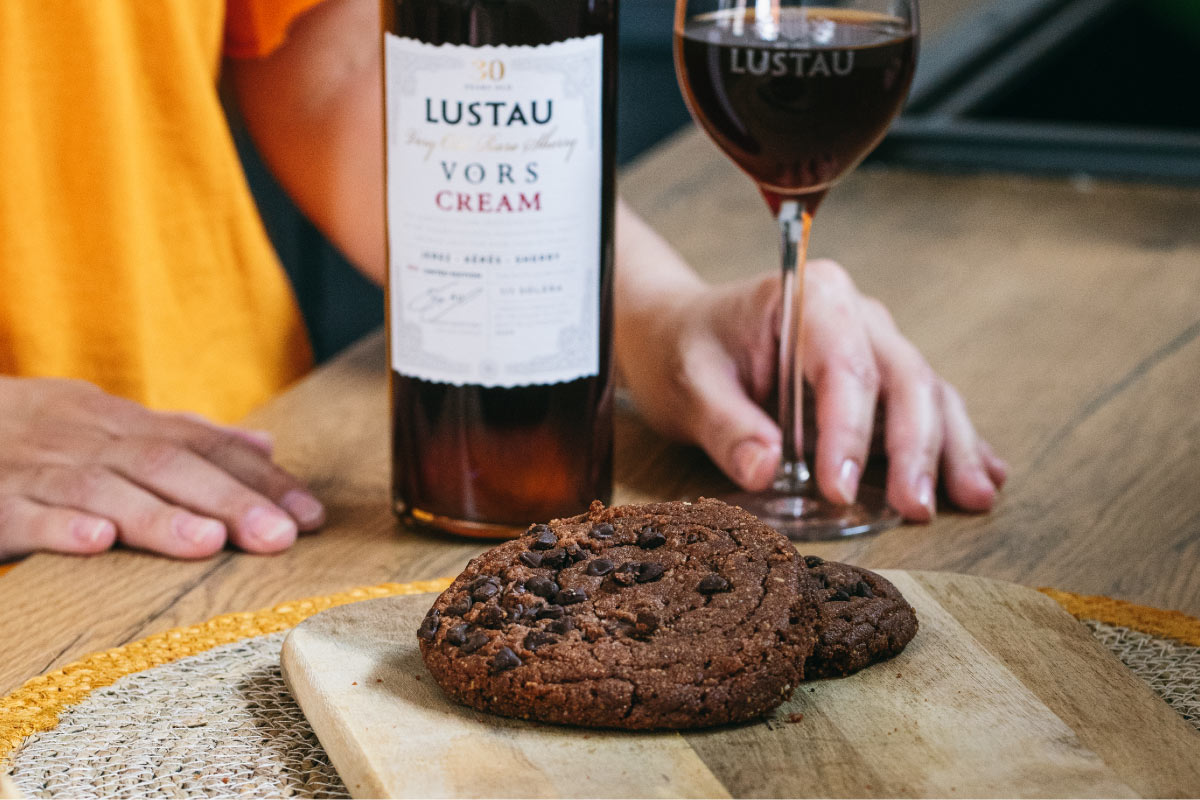Sherry wines are revered worldwide for their uniqueness and exceptional quality and diversity. Among these wine gems, there is one singular category that stands out above the rest: VORS wines, a Latin acronym that brings together time and distinction in the sherry region.
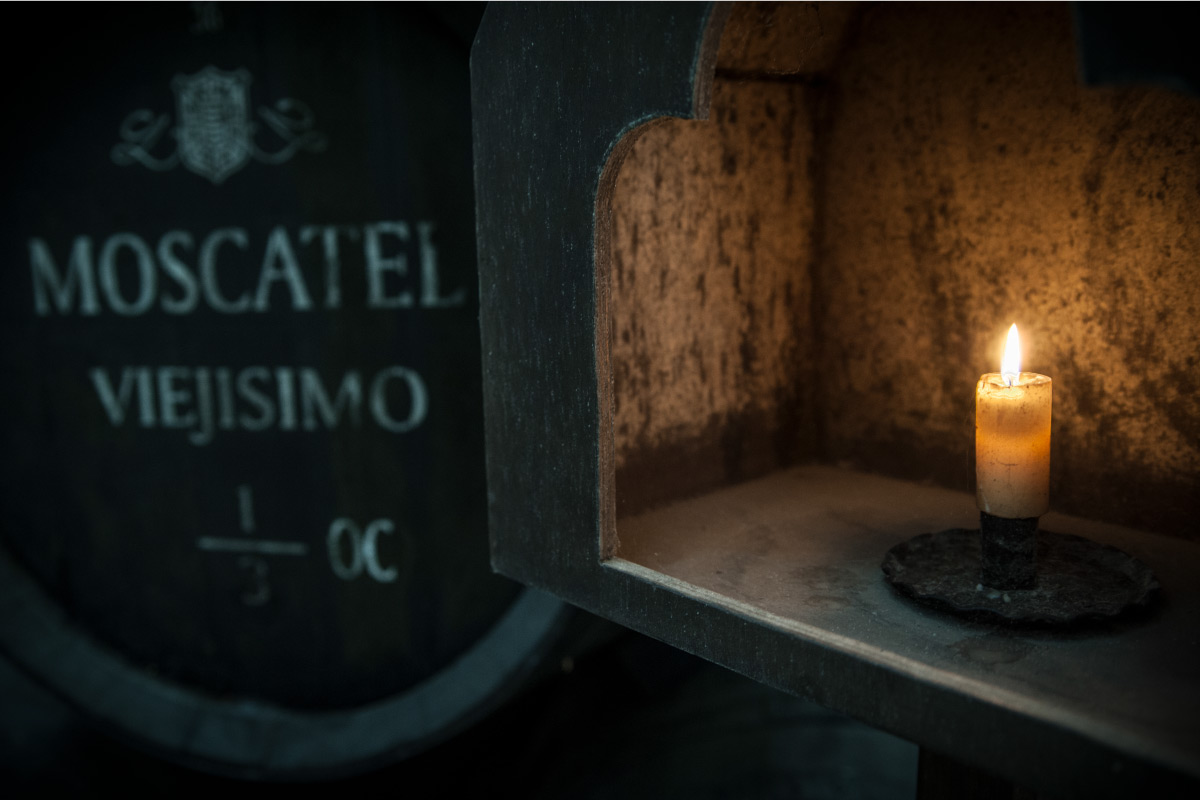
WHAT DOES VORS MEAN?
The term “VORS” comes from the Latin “Vinum Optimum Rare Signatum”, however, the acronym VORS is also identified with its English meaning: “Very Old and Rare Sherry.” Nevertheless, this designation identifies wines crafted in the region that have been aged in casks for an exceptionally long period of time thus providing them with unique characteristics and extraordinary quality. VORS wines are therefore considered the oldest, most exclusive, luxurious and complex wines that can be elaborated in the Jerez region.
CERTIFIED WINES TO GUARANTEE QUALITY AND UNIQUENESS: VOS & VORS.
The regulations of age certified sherry stipulate the application of specific terminology. Hence, sherry aged over 20 years (average age) can use the initials VOS which stand for the Latin phrase “Vinum Optimum Signatum” (wine selected as optimal) or “Very Old Sherry”; and as stated above, in the case of those wines aged over 30 years (average age) the acronym VORS is used.
Both VOS and VORS (together with the full Latin expressions corresponding to their initials) appear on the special seals which the Consejo Regulador uses to distinguish these wines from others and appears on their labeling. Each seal is numbered individually for every bottle of wine, generally placed on the label or back label, and this number can be traced back to the records that the Consejo holds for each and every one of these wines.
To obtain this certification of quality and age, every bodega must submit their wines to the judgement of an Expert Tasting Committee. This is made up of specialists with accredited expertise and reputation who have no connection with the sherry bodegas. The wines must be analyzed, utilizing various tests, for ester content, ash or dry extract. Even so, results of the analysis alone are not considered sufficient to merit the certification of the Consejo if the wine in question fails to satisfy the demanding qualitative standards set by the team of expert tasters.

SHERRY BODEGAS’ GEMS
Many wineries in the region preserve these enological treasures. Until relatively recent times, these wines, some of them being already centuries old, have rarely made it to the market. Traditionally, they were reserved for privileged members or to honor authorities and special guests. VOS and VORS terms didn’t receive official recognition until the year 2000, when the Regulatory Council created and regulated a special category of Certified Aged Sherry Wines.
WINE STYLES
VORS is not a specific style of wine but a wide range of personalities that includes several wine expressions. Despite their versatility, only amontillado, palo cortado, oloroso, blends and sweet wines are eligible for these age-designated categories, which excludes wines that undergo purely biological aging, like finos and manzanillas. The reason is the long period of aging required to achieve the character, concentration and personality found in very old sherry wines. A fino or manzanilla will never last “unoxidized” 30 years. The “flor” cannot prevent losing losing strength as the wine gains concentration.
Lustau, following its philosophy, offers the most complete collection of VORS on the market, with a total of six different wine styles. Lustau VORS is the most exceptional collection, created with wines subjected to a strict in-house selection process that results in less than 1,000 bottles of each at any release.
This collection has its origins in the searching and selecting process that Manuel Lozano, former Lustau Capataz General, made in 2010 among the oldest solera casks.
The wines have been bottled without any kind of treatment, having been drawn straight from the barrel.
Lustau VORS Amontillado
1/8 casks. +30 years average age.
Dark amber in color with aromas reminiscent of butterscotch, noble wood, old leather and furniture polish. Concentrated nose of dried dark fruits, and candied peel. Savory, almost saline, dry, fresh and invigorating on the palate. Very pleasing mouthfeel, typical of the concentration found in the amontillados of such long aging.
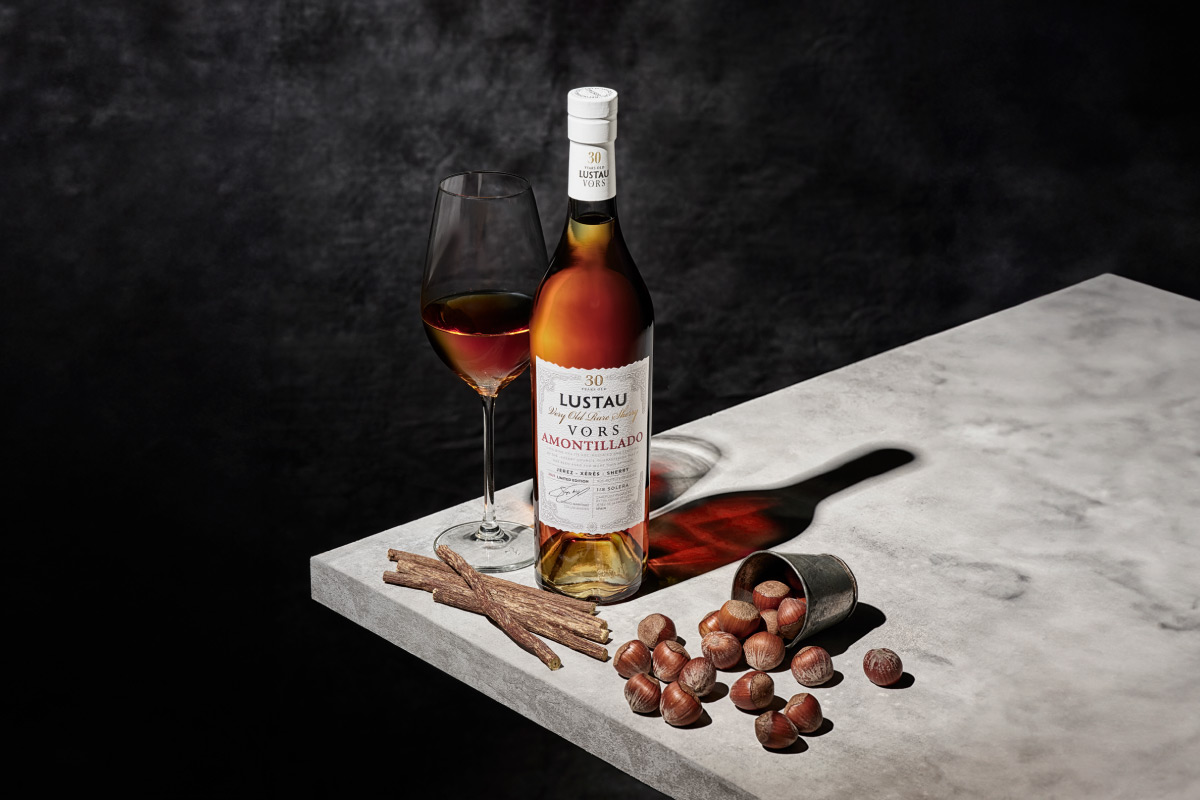
Lustau VORS Palo Cortado
1/8 casks. +30 years average age.
Coppery topaz in color. Vibrant pecan nut aromas. Clean, pure and fresh fruited nose with a slight interwoven salinity. Sweet candied fruit and spice lead on the palate with toffee and citrus notes broadening the palate.
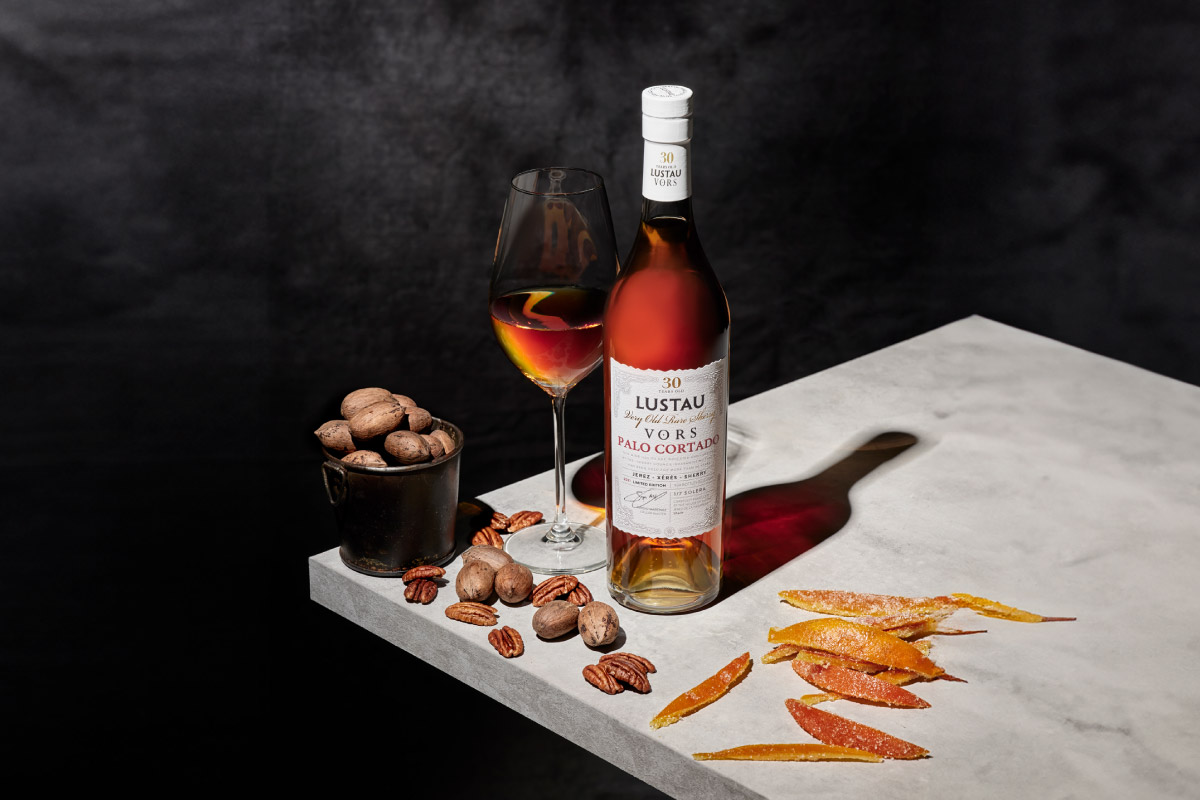
Lustau VORS Oloroso
1/9 casks. +30 years average age.
Old gold color with bronze hues. Endless depth of fruit and complexity of
evolution with leather and varnish. Expansive palate with crunchy walnuts and marmalade. Complex and intense mouthfeel, reminiscent of candied chestnuts and old brandy, crafting its great concentration.
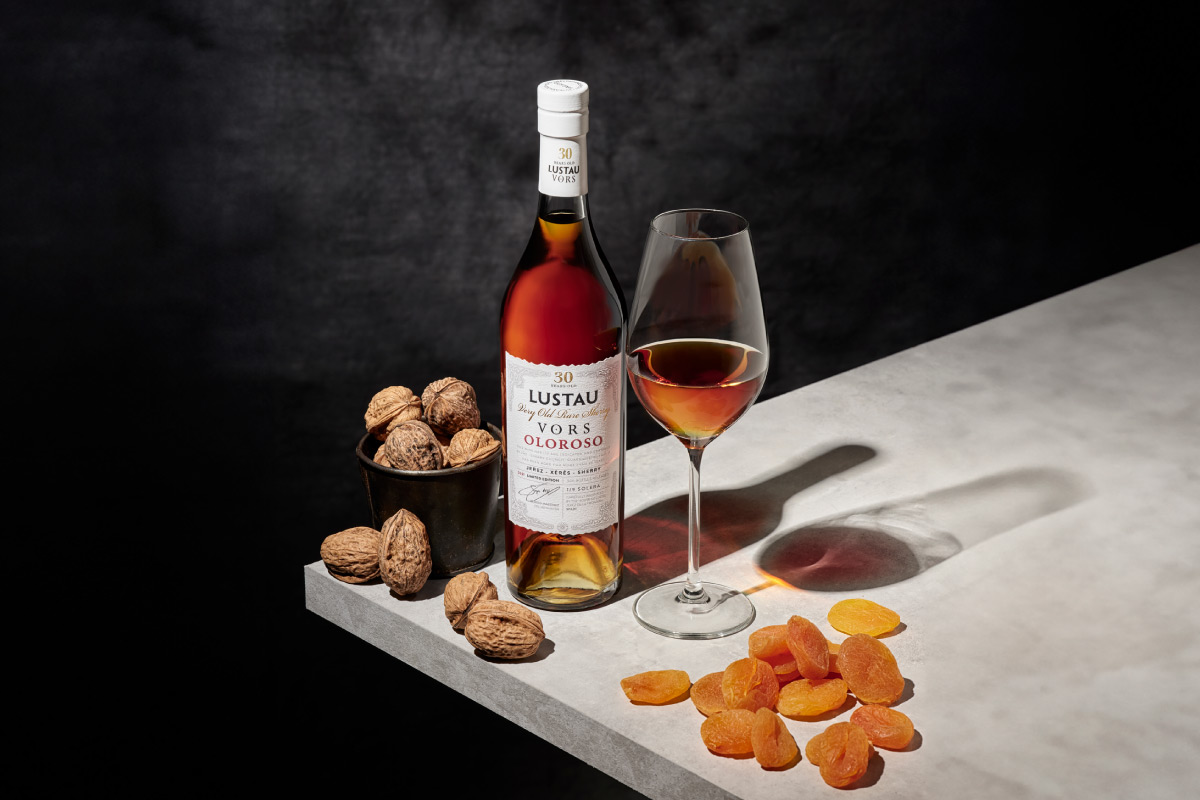
Lustau VORS Cream
1 cask. +30 years average age.
Old gold color with coppery hues. This wine has a pronounced and complex nose, with aromas of nougat, orange peel, roasted coffee beans, dried apricots and plums. Smooth and rich from the beginning, intense, suggestive of old brandy on the palate.
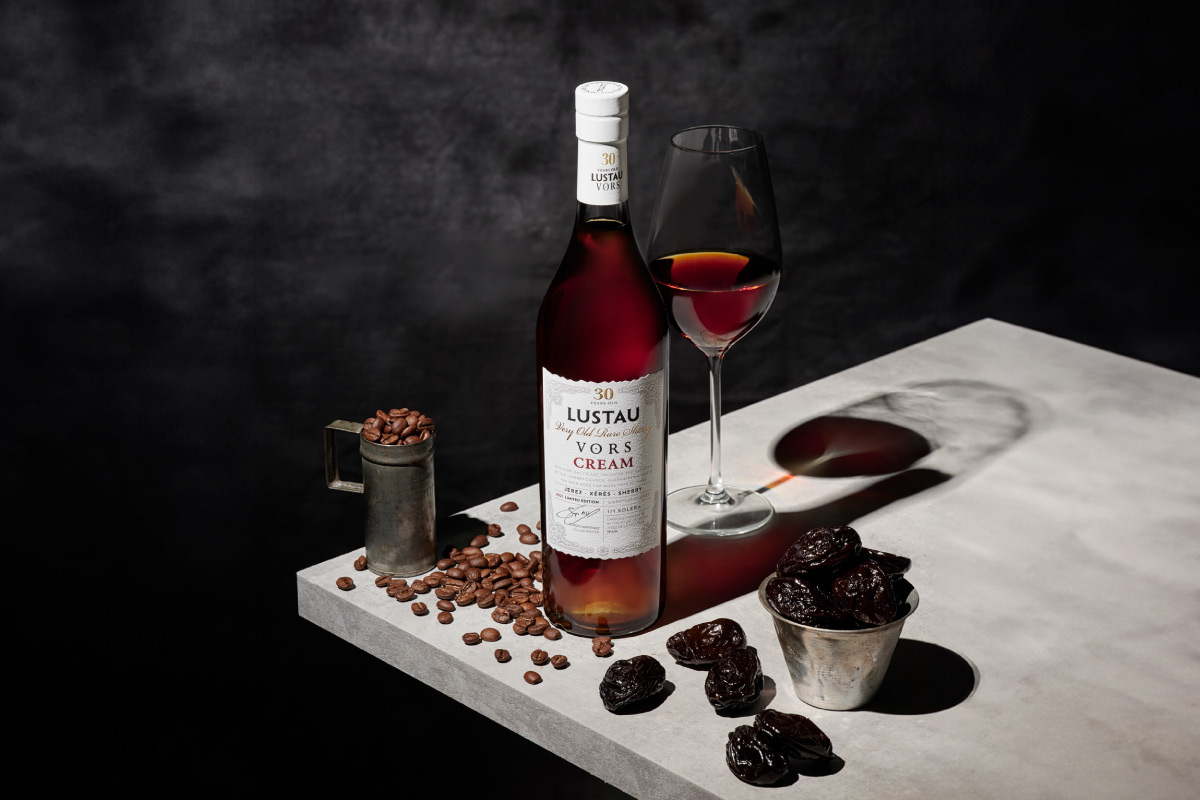
Lustau VORS Moscatel
1/3 casks. +30 years average age.
Dark mahogany color. Exceptionally expressive on the nose. Aromas of candied fruits and a remarkable spicy background, enhanced by hints of noble woods. Surprisingly balanced on the palate, with outstanding acidity. Unctuous, full, and velvety. Endless finish.
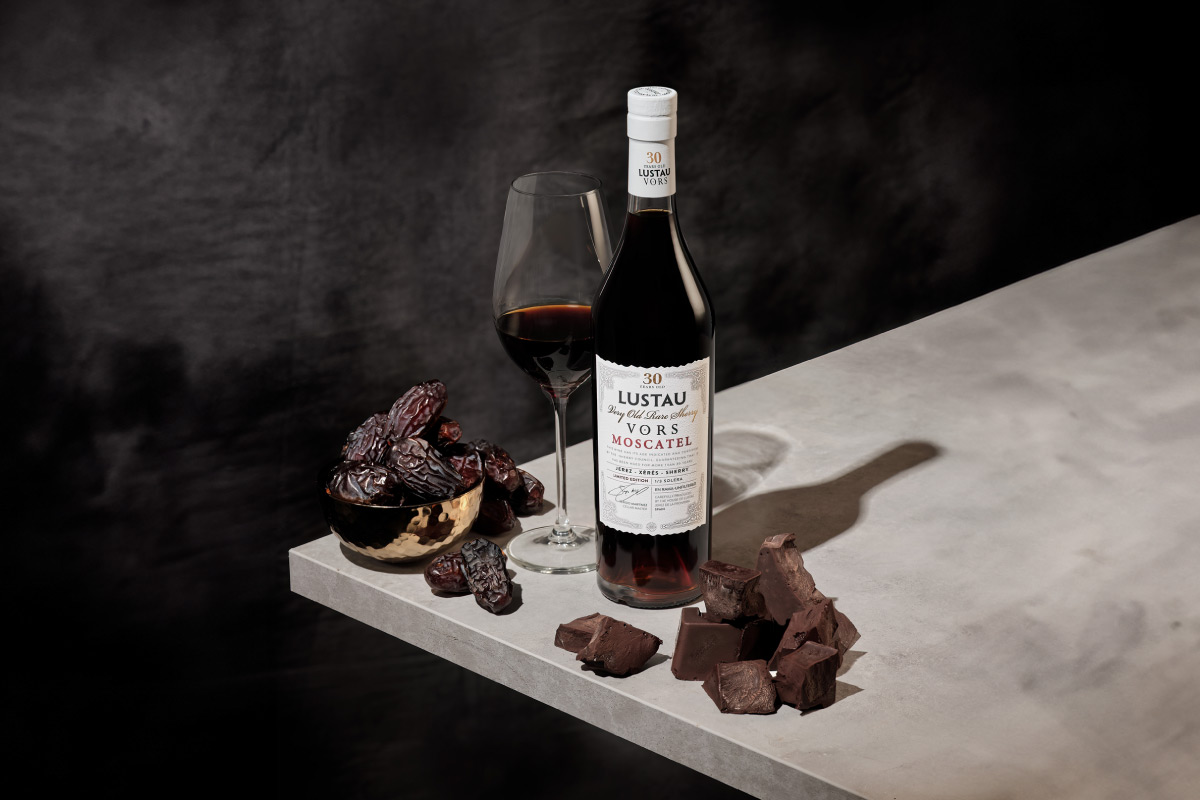
Lustau VORS Pedro Ximénez
1/6 casks. +30 years average age.
Opaque ebony in color with an iodine rim. Complex and fascinating bouquet, bursting with aromas of dried figs, dates, roasted coffee beans, cocoa and liquorice. Creme caramel, barley sugar and nutty notes and Christmas spices with luscious, sweet richness on the palate. Its light acidity leaves the palate clean, incredibly luscious and dense, but not at all cloying.
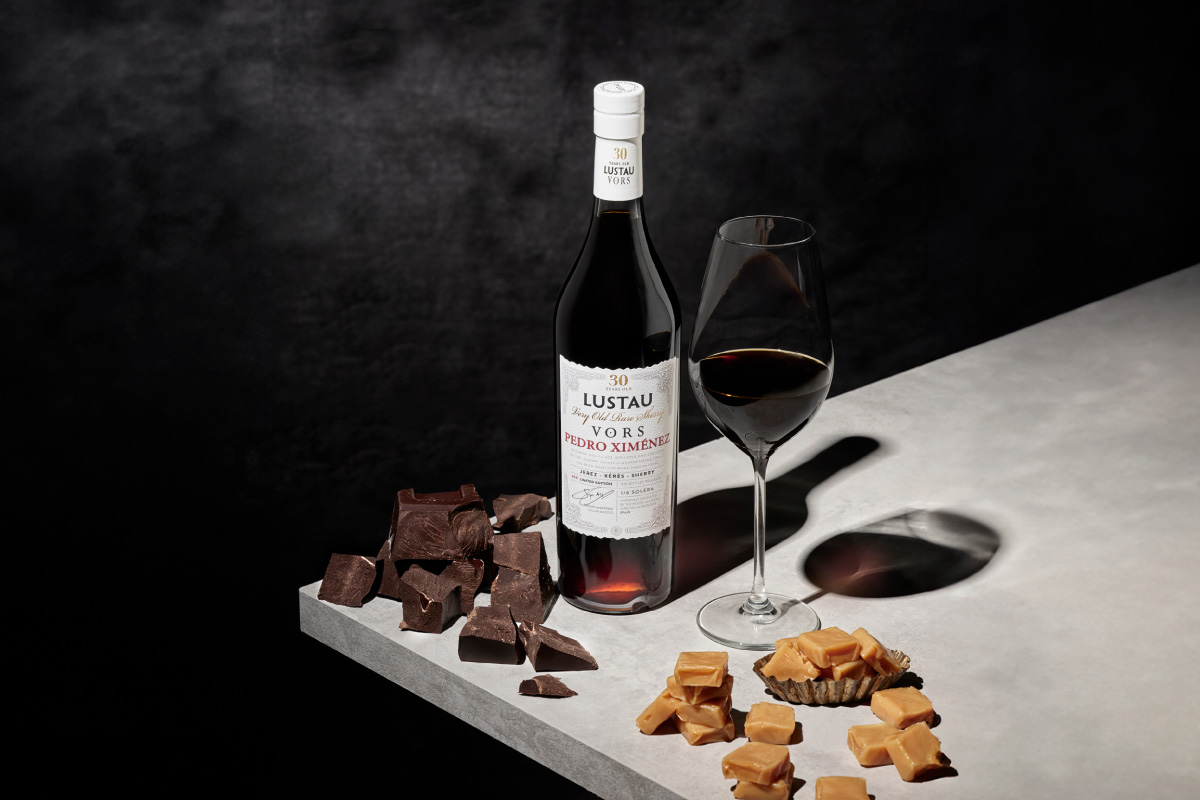
AGING PROCESS
The exclusivity of VORS wines lies in their extensive and challenging aging process, which contributes to the concentration, depth, and complexity of flavors that make them stand out over the rest of the sherry wine categories.
Age in VORS wine, as with most of the sherry wine categories, is an average age. Therefore, VORS wines get their identity from the characteristic dynamic blending system of the region (solera and criaderas system), where the wine contained in casks undergo a continuous process of harmonization with younger and older wines. This aging method aims to preserve and enhance the wine’s personality and distinctive character over decades of aging.
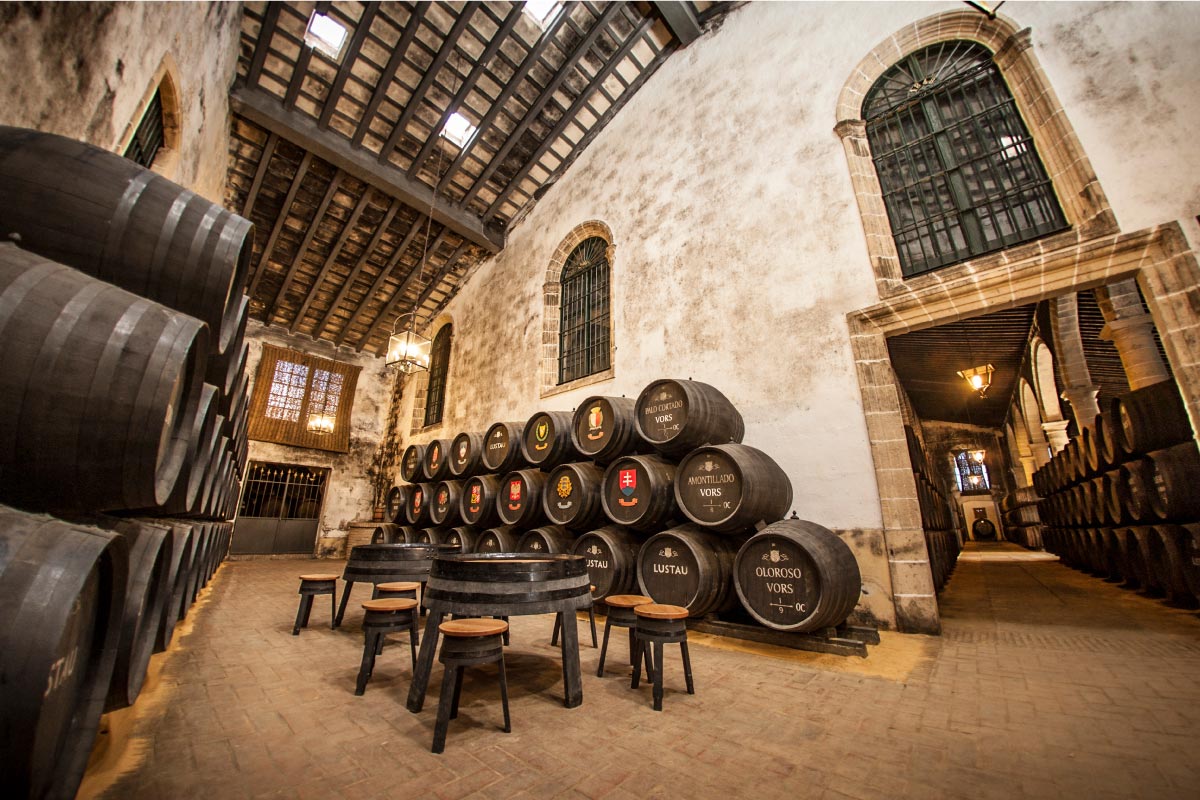
Tap on the picture to learn more about the two characteristic ways to age wine in the Sherry Region.
VORS certification is based on the quality and expressiveness of the batch extracted by the winery that is meant to be bottled, known as “saca.” This certification is not granted to brands and/ or types of wine but to every individual batch drawn from the solera, every single time that wine is being bottled. That means wineries need to apply for the certification (and conform to this strict certification process) with every batch of VORS wine in advance, before the wine goes to market.
The location of the casks that age older wines also influences the aging process. At Lustau and at most sherry houses with wines of this category, VORS wines rest in a private, difficult to reach area known as the “Sacristía” (sacristy), a very specific zone where temperature and humidity levels are different from other areas of the winery’s premises, promoting a different aging environment for this type of wine. To understand why “Sacristía”, a Catholic religious term, is used to name such location, it is also important to understand the important role of churches and religious temples in war or invasions. During the first decade of the 19th Century, Spain was in open war against Napoleon and the French army. French soldiers were noted to plunder and loot local art, food, and wine, while advancing across the Iberian Peninsula. Eventually facing the locals’ rage and cleverness, they found villages and cities out of goods and fine art to plunder. There are many stories from that period that reflect the hard times Spain experienced while trying to become independent from the French. Among some of them, the quest of several owners hiding their sherry in the most inaccessible of sacred places, catholic churches. In these places, where God is set to rest, dozens of casks of their finest and oldest wines were placed in a safe place with the French soldiers nearby. From this moment on the most precious and exclusive wines began to be known as “vinos de Sacristía” (Sacristy wines). Since then, the VORS wines have continued to be aged in this special place known as the Sacristía in homage to this historical milestone.
Other terms used before the Consejo Regulador decided to establish the VOS/VORS designation and classification to name old wines in the region were: “Viejo” (old), “Muy Viejo” or “Viejísimo” (very old).
THE VERY BEST OF SHERRY
VORS wines represent the peak of Jerez’s winemaking tradition. Their exclusivity, combined with decades of careful aging, makes them true enological collection pieces. When toasting with a VORS wine, you celebrate the rich heritage of a region that has been crafting wine for Millenia. As the philosopher Roger Scruton once wrote: “What we drink in a glass of sherry is not just the fruit and its ferment, but also the unique flavor of a place where the gods have been invited and have found their home.”
